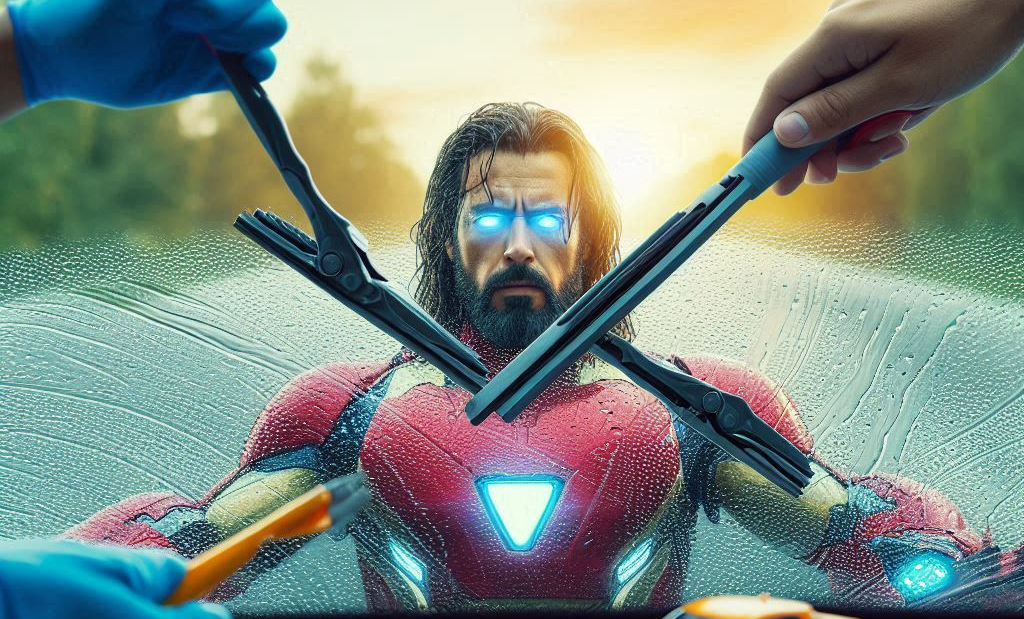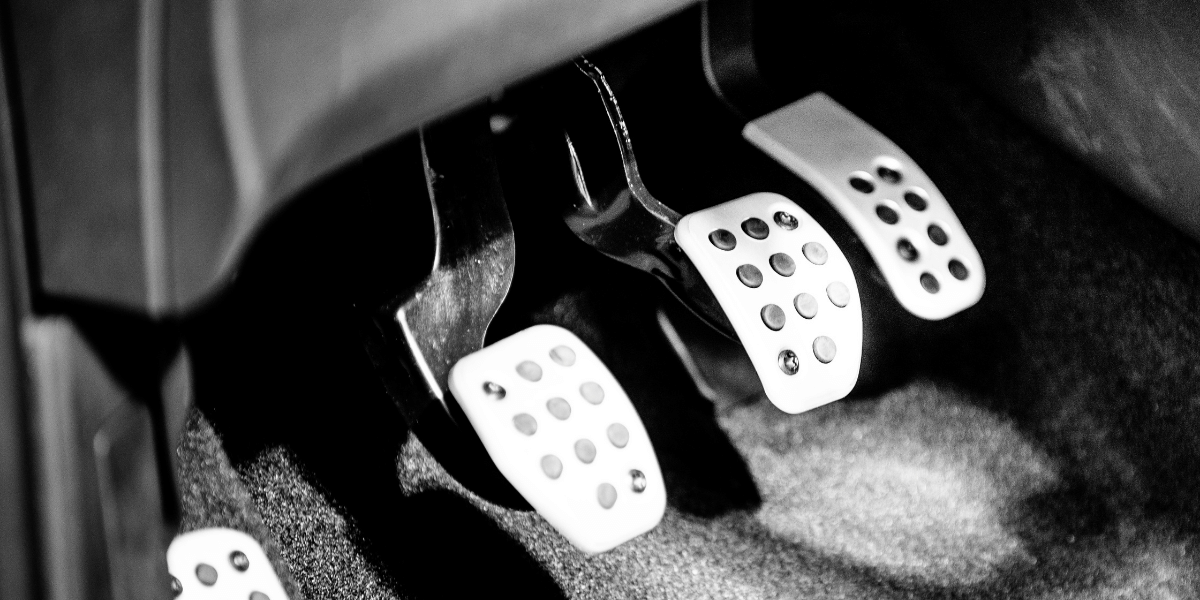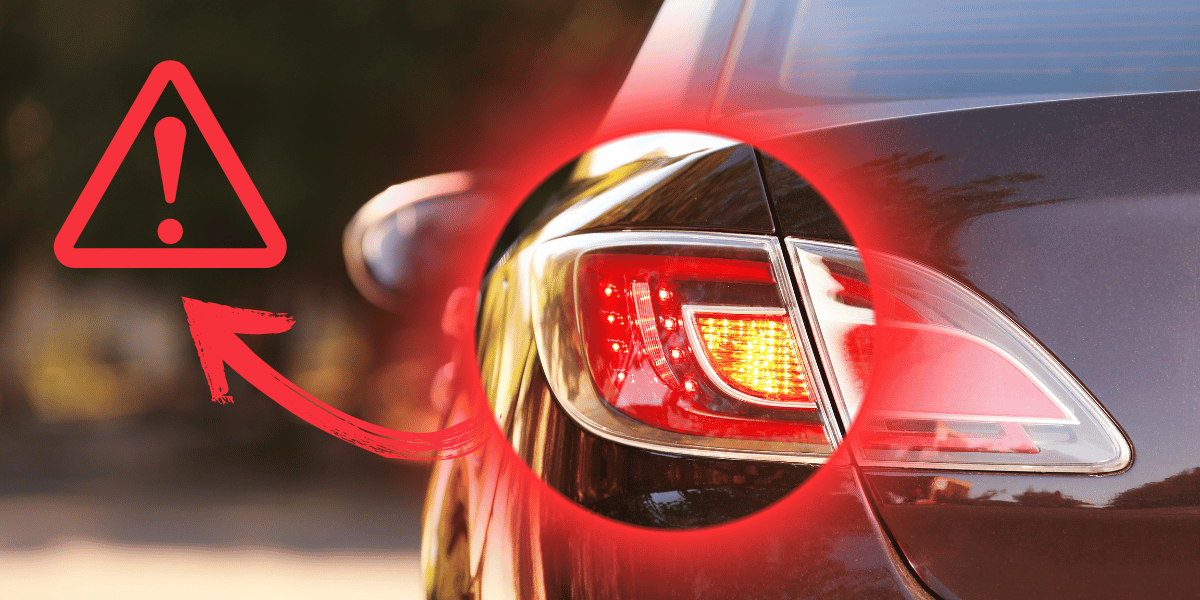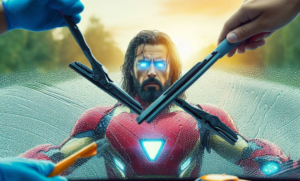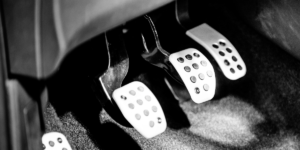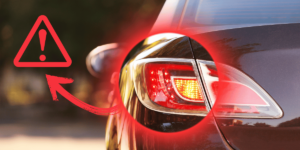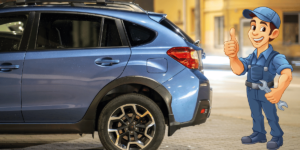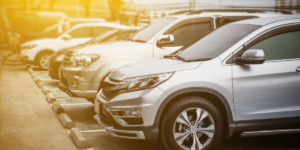Some of the most common techniques used to restore cars are sandblasting, which can also be used on trucks and motorbikes. Still, people often wonder if it’s safe for antique cars, which are important pieces of automobile history that need to be handled carefully.
When contemplating the idea of subjecting your cherished antique car to the abrasive force of sandblasting, it’s natural to be concerned about potentially erasing years of history and character from its surface. For one thing, sandblasting was first created to remove rust from metal surfaces. This method may or may not work, though, depending on the surface of the car you want to sandblast.
The world of repairing cars has changed a lot over the years. Now, there are many methods and materials that can help individuals restore old cars with more care and consideration. For this reason, sandblasting is still an important part of restoration, but it needs to be used only when it’s necessary to protect the history and charm of each old car.
What is sandblasting?
A stream of rough material is used in sandblasting to get rid of rust, paint, and other layers on a surface. It cleans and gets an area ready for painting or other finishing work very well. Sandblasting can also be used to shape and smooth surfaces and get rid of graffiti and other marks that you don’t want to see.
How does car sandblasting work?
A stream of rough material is used in car sandblasting to get rid of rust, paint, and other coverings on the car’s body. It is usually sand that is used as an abrasive, but aluminium oxide or glass beads can also be used. High pressure is used to push the rough material against the car’s body, removing the rust, paint, and other coverings.
- A sandblasting cabinet is a big room that holds the gritty material and the sandblaster. This is where most car sandblasting is done. The sandblaster is a machine that pushes rough material at the car’s body with compressed air.
- Before sandblasting a car, it has to be put inside the sandblasting box. Then, the sandblaster is turned on, and the rough material is sprayed on the body of the car. The rough material will get rid of the paint, rust, and other coverings on the car’s body.
- The car will be washed and checked to make sure that all the rust, paint, and other coverings have been removed after the sanding is done.
Sandblasting a car can be a great way to clean it and get it ready for painting or repair. But it’s important to remember that if you don’t do it right, sanding can also damage a car. When you sandblast, you need to make sure you use the right grit and the right weight.
Types of car sandblasting?
Wet sandblasting and dry sandblasting are the two main ways to sandblast a car.
- Wet sandblasting: A mix of water and abrasive material is used in wet sandblasting to get rid of rust, paint, and other layers on the body of a car. Wet sandblasting is not as rough as dry sandblasting, so it is less likely to hurt the body of the car. But it takes longer to do wet sandblasting than dry sandblasting.
- Dry sandblasting: To get rid of rust, paint, and other layers on a car’s body, dry sandblasting only uses rough materials. It is more likely to damage the car’s body when dry sandblasting is used instead of wet sandblasting. But dry sandblasting is also faster than wet sandblasting.
Other than wet and dry sandblasting, there are a few other types of sandblasting that are only used on cars.
- Sandblasting without dust: This is a sort of wet sandblasting that uses abrasive material mixed with water to get rid of rust, paint, and other coatings on the body of a car.
- Dustless sandblasting: Also uses a vacuum device to get rid of the dust and other things that are left over after the sandblasting process. Because of this, dustless sandblasting is better for the environment and safer than regular sandblasting.
- Soda blasting: Do not use baking soda as the gritty material in soda blasting. Instead, use sodium bicarbonate, which is also known as soda. Soda blasting is not as rough as sandblasting, and it is less likely to damage the body of the car. Soda blasting is often used to clean sensitive parts of a car, like the engine and the inside.
- Vapor blasting: This is a type of Vapor blasting that uses a mix of water and abrasive material to get rid of rust, paint, and other layers on the body of a car. Vapor blasting is not as rough as sandblasting, so it is less likely to damage the body of the car. It is also better for the climate than traditional sandblasting to use vapor blasting.
Which kind of car sandblasting is best for you will rely on your price range and needs. Talk to a good sandblasting shop if you’re not sure what kind of car sandblasting will work best for you.
Benefits of car sandblasting
It works really well to get rid of rust, paint, and other coverings on the body of a car. If you’re painting a car, restoring one, or just want to make your car look better, this can help.
Cars can be got ready for restoration or painting with this. Any rust or rusting on the car’s body can be removed by sandblasting. This will help the new paint stick better.
Plus, it can make a car look better. Sandblasting can get rid of any paint or stickers that you don’t want on the car’s body.
Shape and smooth surfaces are important. Sandblasting can be used to make the body of a car smoother by getting rid of any rough spots or lines.
Get rid of graffiti and other marks that you don’t want. Graffiti, stickers, and other marks that you don’t want on a car’s body can be taken off with sandblasting.
Soft parts of a car need to be cleaned. Fine parts of a car, like the engine area and the inside, can be cleaned with sandblasting.
It might make a car worth more. A car that has been well taken care of will always be worth more than one that hasn’t. When you sandblast your car, you can make it look better and increase its value.
When to get your car sandblasted?
You might want to get your car Sandblast at the following times:
- If your car has rust. Sandblasting is a great way to get rid of rust on the body of a car. Rust can hurt the body of the car and make it look bad. Sandblasting can get rid of the rust and make the car look like new again.
- If you are restoring your car. In the event that you are restoring your vehicle. While restoring a car, sandblasting can be used to get it ready to be painted. Any rust or rusting on the car’s body can be removed by sandblasting. This will help the new paint stick better.
- If you want to paint your car. Sandblasting can be used to get your car ready to be painted. Sandblasting can get rid of any old paint or other layers on the body of the car. This will help the new paint stick better.
- If you want to improve the appearance of your car. If you’d like to make your car look better. Sandblasting can be used to get rid of old paint or stickers or any other coats that you don’t want on the car’s body. This might make the car look better all around.
An honest sandblasting shop is the best place to ask if you’re not sure if your car needs to be sanded. They will be able to look at your car, figure out what needs to be done, and give you their advice.
How to prepare your car for sandblasting?
In order to get your car ready for sandblasting, you must:
- Take out all of the car’s glass. This covers the headlights, windshield, and windows.
- Close off any gaps within the vehicle. This applies to the hood, trunk, and doors as well.
- Take out any broken or loose pieces from the vehicle. This covers the wheels, trim, and bumpers.
- Thoroughly clean the vehicle. By doing this, any debris, oil, or other impurities that can impede the sandblasting procedure will be eliminated.
- Any places you do not want to be sandblasted should be covered. The headlights, taillights, and chrome trim may be examples of this.
Here are some additional tips for preparing your car for sandblasting:
- Make sure that all of the fluids have been drained from the car. This includes the gasoline, oil, and coolant.
- Remove any electrical components from the car. This could include the battery, the alternator, and the starter.
- Cover the engine compartment. This will protect the engine from the sandblasting process.
- Tape off any areas that you do not want to be sandblasted. This could include the windows, the headlights, and the taillights.
What to expect during car sandblasting?
The sandblasting process itself will take anywhere from a few hours to a few days, depending on the size and condition of the car. Once the sandblasting process is complete, the car will be washed and inspected to make sure that all of the rust, paint, and other coatings have been removed.
Here is a more detailed overview of what to expect during car sandblasting:
- The car will be placed in a sandblasting cabinet. The sandblasting cabinet is a large chamber that contains the abrasive material and the sandblaster.
- The sandblaster will be turned on and the abrasive material will be sprayed at the car’s body. The abrasive material will remove the rust, paint, and other coatings from the car’s body.
- The sandblasting process will continue until all of the rust, paint, and other coatings have been removed.
- The car will be washed and inspected. This will ensure that all of the abrasive material has been removed and that the car is ready for the next step in the restoration process.
How much does it cost to sandblast a car?
Here is a breakdown of some of the factors that can affect the cost of car sandblasting:
- Size of the car: Larger cars will cost more to sandblast than smaller cars.
- Condition of the car: Cars that are in poor condition will require more time and effort to sandblast, which will increase the cost of the job.
- Type of abrasive material used: Different types of abrasive materials have different costs. For example, aluminium oxide is more expensive than sand.
- Location of the sandblasting shop: Sandblasting shops in major cities tend to charge more than sandblasting shops in rural areas.
If you are considering getting your car sandblasted, it is important to get quotes from multiple sandblasting shops before making a decision. This will help you to get the best possible price for the job.
Here are some tips for saving money on car sandblasting:
- Prepare your car yourself. As mentioned above, preparing your car for sandblasting can be a time-consuming process. By preparing your car yourself, you can save money on labor costs.
- Get quotes from multiple sandblasting shops. As mentioned above, it is important to get quotes from multiple sandblasting shops before making a decision. This will help you to get the best possible price for the job.
- Negotiate the price. Once you have gotten quotes from multiple sandblasting shops, you can try to negotiate the price. You may be able to get a lower price if you are willing to pay in cash or if you are willing to drop off and pick up your car yourself.
It is important to note that car sandblasting is a serious process that should only be done by a qualified professional. Do not attempt to sandblast your car yourself unless you have the proper training and equipment.
How to find a reputable car sandblasting service?
- Ask for recommendations from family, friends, or colleagues. This is a great way to get first-hand information about the quality of work and customer service that a sandblasting shop provides.
- Read reviews of shops online. This can help you to get a sense of the overall reputation of a shop and to identify any potential red flags.
- Visit the sandblasting shop in person and ask questions. This is a great way to get to know the staff and to see the shop’s facilities first-hand. Be sure to ask about the shop’s experience with sandblasting cars and about the types of abrasive materials that they use.
- Get quotes from multiple sandblasting shops before making a decision. This will help you to compare prices and to find the best deal.
Here are some additional tips for finding a reputable car sandblasting service:
- Make sure that the sandblasting shop is licensed and insured. This will protect you in case of any damage to your car.
- Ask about the shop’s warranty. Most reputable sandblasting shops will offer a warranty on their work.
- Make sure that the sandblasting shop is using high-quality abrasive materials. This will help to ensure that your car’s finish is not damaged.
Here are some questions you can ask a car sandblasting service:
- What types of abrasive materials do you use?
- What is your experience with sandblasting cars?
- Do you offer a warranty on your work?
- What safety procedures do you have in place?
- Can I see examples of your work?
By asking these questions, you can get a better understanding of the sandblasting shop’s capabilities and experience. This will help you to make an informed decision about which shop to choose.
What protective equipment is needed for Car sandblasting?
Here are some safety tips to keep in mind for Car Sandblasting:
- Wear personal protective equipment (PPE). This includes a respirator, gloves, goggles, and a long-sleeved shirt and pants.
- Be careful not to sandblast any delicate parts of the car. This includes the glass, trim, and electrical wiring.
- Use the correct abrasive material and pressure. Sandblasting with the wrong abrasive material or at the wrong pressure can damage the car’s body.
- Sandblast in a place with good air flow. Since sandblasting makes a lot of dust, it’s best to do it somewhere with good air flow so you don’t breathe it in.
Here are some additional safety tips to keep in mind:
- Inspect the car before sandblasting. Make sure that there are no flammable or explosive materials in the car.
- Cover any openings in the car. This includes the doors, trunk, and hood.
- Use a sandblasting cabinet. A sandblasting cabinet will help to contain the dust and debris created during the sandblasting process.
- Be aware of your surroundings. Sandblasting can be dangerous to bystanders, so it is important to be aware of your surroundings and to take steps to protect others from the dust and debris created during the sandblasting process.
How to sandblast specific parts of your car, such as the frame or undercarriage?
To sandblast specific parts of your car, such as the frame or undercarriage, you can follow these steps:
- Prepare the car for sandblasting. This includes removing all of the glass, sealing off any openings, and removing any loose or damaged parts.
- Mask off any areas that you do not want to be sandblasted. This could include the body panels, the engine, and the exhaust system.
- Place the car in a sandblasting cabinet. The sandblasting cabinet is a large chamber that contains the abrasive material and the sandblaster.
- Turn on the sandblaster and sandblast the desired areas. Be careful not to sandblast any delicate parts of the car.
- Inspect the car to make sure that all of the rust, paint, and other coatings have been removed.
- Wash the car and remove any remaining abrasive material.
How to sandblast your car at home?
To sandblast your car at home, you will need the following equipment:
- A sandblasting cabinet
- A sandblaster
- Abrasive material (such as sand or aluminium oxide)
- Personal protective equipment (PPE) (such as a respirator, gloves, goggles, and a long-sleeved shirt and pants)
Once you have all of the necessary equipment, you can follow these steps to sandblast your car at home:
- Prepare the car for sandblasting. This includes removing all of the glass, sealing off any openings, and removing any loose or damaged parts.
- Mask off any areas that you do not want to be sandblasted. This could include the body panels, the engine, and the exhaust system.
- Place the car in the sandblasting cabinet.
- Turn on the sandblaster and sandblast the car. Be careful not to sandblast any delicate parts of the car.
- Inspect the car to make sure that all of the rust, paint, and other coatings have been removed.
- Wash the car and remove any remaining abrasive material.
Being careful with sandblasting is important. If it’s not done right, it can be dangerous. Personal protective equipment (PPE) should be worn and the place should have good air flow when sandblasting.
How to use different types of sandblasting media for Car Blasting?
There are many different types of sandblasting media, each with its own unique properties and applications. Here is a brief overview of how to use different types of sandblasting media:
- Sand: Sand is the most common type of sandblasting media. It is a relatively inexpensive and easy-to-find abrasive material. Sand is typically used for general-purpose sandblasting applications, such as removing rust, paint, and other coatings from metal surfaces.
- Aluminium oxide: Aluminium oxide is a harder and more abrasive material than sand. It is typically used for more demanding sandblasting applications, such as shaping and smoothing metal surfaces.
- Soda: Soda is a non-abrasive material that is often used for delicate sandblasting applications, such as cleaning stone and glass. Soda is also a good choice for removing graffiti and other unwanted markings from surfaces.
- Glass beads: Glass beads are a fine-grained abrasive material that is often used for finishing and polishing metal surfaces. Glass beads can also be used to remove light rust and corrosion from metal surfaces.
- Walnut shells: Walnut shells are a soft and gentle abrasive material that is often used for cleaning wood and other delicate surfaces. Walnut shells can also be used to remove paint and other coatings from surfaces without damaging the underlying surface.
How to paint your car after sandblasting?
To paint your car after sandblasting, you will need the following supplies:
- Primer
- Paint
- Clear coat
- Hardener
- Reducer
- Spray gun
- Air compressor
- Mixing cups
- Strainers
- Painter’s tape
- Drop cloths
Once you have all of the necessary supplies, you can follow these steps:
- Prepare the car for painting. This includes cleaning the car thoroughly and removing any dirt, debris, or grease from the surface. You may also need to sand the car lightly to create a smooth surface for the paint to adhere to.
- Mask off any areas that you do not want to be painted. This could include the windows, trim, and lights.
- Apply the primer. Primer helps the paint to adhere to the surface and provides a uniform base for the paint. Apply the primer according to the manufacturer’s instructions.
- Apply the paint. Apply the paint according to the manufacturer’s instructions. Be sure to apply several thin coats of paint rather than one thick coat.
- Apply the clear coat. Clear coat helps to protect the paint and give it a glossy finish. Apply the clear coat according to the manufacturer’s instructions.
- Allow the paint to dry completely. Once the paint has dried, you can remove the painter’s tape and enjoy your new paint job!
How to maintain your car after sandblasting?
- Wash the car regularly. This will help to remove dirt, debris, and other contaminants from the surface of the car.
- Wax the car regularly. Waxing helps to protect the paint from the elements and makes it easier to clean.
- Avoid parking the car in direct sunlight. This will help to prevent the paint from fading.
- Have the car professionally detailed regularly. This will help to keep the paint looking its best and protect it from damage.
Is Sand Blasting Safe on Old Cars?
When you sandblast, you use a high-pressure stream of sand to get rid of paint, rust, and other finish on a surface. This way of cleaning works really well, but it can be really rough. This is why you need to be careful when you sandblast old cars. The biggest worry about sandblasting old cars is that it might hurt the metal. The sand’s force can bend or even pierce the metal, especially if it is already weak or broken. This is the reason it’s important to hire a sandblaster that knows how to work with old cars.
Sandblasting old cars can also make lead dust, which is another worry. Up until the 1970s, lead paint was often used on cars. Sandblasting can release lead dust into the air, which workers and people nearby can breathe in. When you’re sanding an old car, you should make sure you stay safe from lead dust.
Overall, sandblasting can be a good and safe way to clean an old car, but you need to be careful and follow the right steps to protect the metal and stay away from lead dust. Here are some safe ways to sandblast an old car:
- Use a sandblaster who is trained to work on old cars.
- Cover the metal with packing tape or something else to keep it from getting damaged.
- Wear a mask and work in a well-ventilated area to keep from coming into contact with lead dust.
- After you’re done, carefully clean up all of the grinding media.
If you’re not sure if sandblasting is safe for your old car, you should talk to a skilled restoration shop.
Is sandblasting safe for antique cars?
Sandblasting can be safe for antique cars, but it is important to use the correct type of abrasive material and pressure, and to sandblast in a well-ventilated area. It is also important to wipe down metal after sandblasting to remove any residual abrasive material. Antique cars are often made with thinner and more delicate metal than modern cars, so it is important to be careful when sandblasting them. Using too much pressure or the wrong type of abrasive material can damage the metal.
Conclusion
Blasting with sand is a strong and efficient way to get rid of rust, paint, and other coverings on metal. But it’s important to use the right kind of abrasive and the right amount of power, and to sandblast in a place with good air flow. It’s also important to wipe down metal that has been sandblasted to get rid of any rough material that is still on it. If it’s not done right, sandblasting can damage metal, so it’s best to have a trained professional do it. If you’re not sure if you should sandblast your car, you should talk to a skilled sandblasting shop.
You might want to try soda blasting, water blasting, or laser cleaning instead of sandblasting if you want anything cheaper or faster. These options are less likely to hurt metal, but they might not be as good at getting rid of rust and other coatings on metal. Follow these steps to keep your car in good shape after sandblasting, no matter which way you choose. This will protect the paint and stop rust from forming.
FAQs about Sandblast a car
Q: What’s the best sand to sandblast a car?
A: The best sand to sandblast a car is a fine-grained sand, such as 30/40 mesh sand. This type of sand is less aggressive than coarser sands and is less likely to damage the car’s body.
Q: How much does it cost to dustless blast a car?
A: The cost of dustless blasting a car can vary depending on a number of factors, including the size and condition of the car, the type of abrasive material used, and the location of the sandblasting shop. Generally speaking, you can expect to pay between $500 and $3,500 for a complete dustless blasting job.
Q: How much does sandblasting cost per hour?
A: The cost of sandblasting per hour can vary depending on a number of factors, including the size and condition of the surface being sandblasted, the type of abrasive material used, and the location of the sandblasting shop. Generally speaking, you can expect to pay between $45 and $75 per hour for sandblasting services.
Q: Is it better to sandblast a car or not?
A: Sandblasting a car is a great way to remove rust, paint, and other coatings from the car’s body. However, it is important to note that sandblasting can also damage the car’s body if it is not done properly. It is important to use the correct abrasive material and pressure, and to sandblast in a well-ventilated area. If you are unsure whether or not to sandblast your car, it is best to consult with a professional sandblasting shop.
Q: Should I sandblast my car before painting?
A: Yes, it is a good idea to sandblast your car before painting. Sandblasting will remove any rust, paint, or other coatings from the car’s body, which will help the new paint to adhere properly.
Q: Is it worth it to sandblast a car?
A: Whether or not it is worth it to sandblast a car depends on a number of factors, including the condition of the car and the desired results. If the car is in poor condition and needs to be completely restored, then sandblasting is a good option. However, if the car is in good condition and only needs to be repainted, then sandblasting may not be necessary.
Q: How messy is sandblasting?
A: Sandblasting can be very messy. It creates a lot of dust and debris, which can be harmful to breathe in. It is important to sandblast in a well-ventilated area and to wear personal protective equipment (PPE), such as a respirator and goggles.
Q: Can sandpaper be used instead of sandblasting?
A: Yes, sandpaper can be used instead of sandblasting, but it is a more time-consuming and labor-intensive process. Sandblasting is also more effective at removing rust and other coatings from metal surfaces.
Q: Is it necessary to wipe down metal after sandblasting?
A: Yes, it is important to wipe down metal after sandblasting to remove any residual abrasive material. This can be done with a damp cloth or a vacuum cleaner.
Q: What are the best alternatives to sandblasting?
A: There are a number of alternatives to sandblasting, such as soda blasting, water blasting, and laser cleaning. The best alternative for you will depend on the specific application.
Q: Can sandblasting damage metal?
A: Yes, sandblasting can damage metal if it is not done properly. It is important to use the correct type of abrasive material and pressure, and to sandblast in a well-ventilated area.

